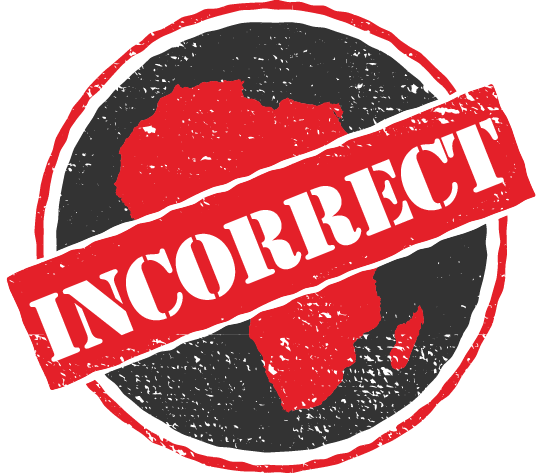
Did the EFF stick to the facts in its 2019 election manifesto? We check a selection of claims.
Claim: 80% of the population continues to occupy less than 10% of South Africa’s land.
The EFF bases its claim on ownership data and the size of the African and coloured population.
The party’s national communications manager, Sixolise Gcilishe, explained how it was calculated:
Total land area: 122 million hectares
minus 67% – white-owned agricultural land
minus 14% – state land
minus 5% – land owned by Indians*
equals 14% of land “left for black African and coloured South Africans”, who make up 88% of the population
*This number is rounded off. The number the EFF provided was 4.82%.This fact-check evaluates each of the EFF’s assumptions stated above.
Is 67% of SA land white-owned agricultural land?
In 1993, the year before South Africa’s first democratic election, a Stats SA agricultural census estimated the country had about 82 million hectares of agricultural land. The government has referred to this land as “white-owned agricultural land”.
This was 67% of South Africa’s total land.
The EFF said work by Plaas, the Institute for Poverty, Land and Agrarian Studies at the University of the Western Cape, was the source of the 67% used in its calculation.
The number is contained in a 2013 Plaas fact-check on land distribution co-authored by Prof Cherryl Walker, a professor of sociology at the University of Stellenbosch. She said the 67% was commercial farmland historically reserved for white ownership, but it shouldn't be assumed to be the share in white hands today.
Since 1994 black people have acquired some of this land through private sales and loans.
Prof Ben Cousins of Plaas described the EFF estimates as “highly misleading”. He said much of the land acquired for land reform since 1994 was “no doubt farmland, and no longer forms part of the 67% of the total land area formerly in the hands of white farmers”.
A report on land redistribution commissioned by parliament says “some land acquired or transferred may not be commercial agricultural land… Nonetheless, we may presume that most may be considered land zoned for agriculture outside of the former Bantustans”.
How much agricultural land is owned by white people? The available data is limited.
According to the 2017 state land audit, farms and other agricultural land amounted to just over 111 million hectares in 2015. The audit only provides a racial breakdown for agricultural land owned by individuals, some 37 million hectares. It estimates that white people own 72% of this land – 26.7 million hectares.
An Agri SA land audit estimated that white farmers owned 68.5 million hectares of agricultural land in 2016. This includes land owned by companies and trusts and amounts to 56% of total land.Agricultural economist Wandile Sihlobo gave Africa Check an estimate of agricultural land not owned by white people.
It identifies 17.5 million hectares of farmland as “not owned by whites”. The calculation was done with the help of agricultural economist Prof Johann Kirsten of the University of Stellenbosch and based on data from 2015 and 2017.
It is made up of agricultural land owned by the state, redistributed and restored land and a “guesstimate” of the land bought by willing black buyers from willing white sellers. It also includes a hectare equivalent of money paid in land restitution claims.
A February 2019 Plaas working paper, co-authored by Kirsten, contains an updated calculation, which relies on 2018 data from the department of rural development and land reform.
Using these redistribution numbers, and an estimated 643,995 hectares of agricultural land acquired by the state for development purposes, it estimates that 64.8 million hectares of farmland (53% of total land) is owned by white people.
The available data therefore does not support the EFF’s assumption that 82 million hectares of agricultural land – 67% of South Africa’s land – is in white hands.
Is state land unoccupied?
The 2017 state land audit focused on privately owned land. The previous audit, published in 2013, identified 17.1 million hectares or 14% of the total land as state-owned land.
But Cousins said “state land” could be a misleading category. “It includes land held for nature conservation, state forests, water and defence force use. It also includes [land] in the traditional areas.”
The 2019 Plaas working paper estimates land under traditional tenure to be 18.4 million hectares – or 15% of total land.
Economist Johann Bornman, given as a source for calculations of land size in the working paper, said that in 2018 the rural development and land reform department updated its estimate of land in the former homelands to this number.
Dr Aninka Claassens, chief researcher at the Land and Accountability Research Centre, said the EFF “seems to ignore the fact that black South African have underlying rights to all the land in the former homelands, which is state land”.
(In the explanation of its calculation, the EFF said it was “almost impossible to scientifically determine” how state land was occupied. We have asked Stats SA to help us determine who occupies land in the former homelands and will update this fact-check once we have the results.)
Read other EFF claims we have checked:
- State did not buy only 7% of the land it targeted
- Dropout rates: Is South Africa among the worst in the world?
- Are almost 40% who need jobs unemployed?
- Does the EFF have ‘a higher gender balance’ in Parliament?
How much land do Indian South Africans own?
The 2017 state land audit found that 77% of land (94 million hectares) was privately owned.
But only the race of individual owners of 37.8 million hectares could be determined. And these numbers may not be spot-on.
The deeds registry does not record the race of land owners.
In cases where the race could not be derived from Stats SA data, names and surnames were used. “The indirect extraction of race data… exposed the land audit to the risk of under- or over-reporting,” the audit report says.
The EFF calculation assumes 5% of South Africa’s total land (5.9 million hectares) is owned by Indians. But this is not supported by the land audit, which puts individual Indian ownership at 2.1 million hectares, including sectional title property.
The rural development and land reform department previously told Africa Check/City Press it did not include sectional title units when calculating land owned by individuals “as they include units in high-rise buildings such as flats, office buildings… which may distort the numbers”.
Indian people may own land through trusts, companies and community organisations but there is no data on this. The same goes for African and coloured people, who own 6.9 million hectares of individually owned land or close to 6% of the total land. Coloured and African people together make up close to 90% of the population, according to Stats SA’s 2018 mid-year population estimates.
What is missing?
The 2017 land audit only gives data on the race of the owners of about a third of the land. A breakdown by race for other types of private ownership is not available.
It is also silent on who occupies this land – in some cases owners do not occupy their land – as well as on who occupies land in the former homelands.
The EFF’s calculation also does not take into account erven and sectional title units owned by white people.
Verdict: Incorrect
The EFF’s calculation makes assumptions about ownership to support a claim about the occupation of land. It incorrectly assumes white people own 82 million hectares of agricultural land and overestimates land individually owned by Indians. It is therefore incorrect.
The EFF did not respond to a request for comment by the time of publication.
- This fact-check was produced as part of a journalism partnership with Africa Check, the continent’s leading fact-checking organisation. The project aims to ensure that claims made by those in charge of state resources and delivering essential services are factually correct. In the run-up to this year’s national and provincial elections it will be increasingly important that voters are able to make informed decisions. This series aims to provide voters with the tools to do that. The Raith Foundation contributed to the cost of reporting.




 Publications
Publications
 Partners
Partners








